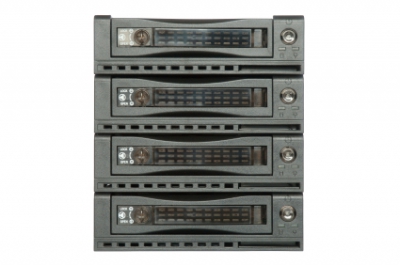This technique is triggered by the RAID-controller (that is on the hardware level) or by the OS (that is on the software level). Linux is most widely used to operate the RAID.
RAID 5 can be of various types depending on:
• The number of disk drives and their storage capacity;
• The arrangement of the disk drives;
• The size of the array block;
• The block-and-data-write algorithm;
• The checksum pattern;
• The occurrence/nonoccurrence of data write interruption or displacement errors;
• The occurrence/nonoccurrence of areas storing RAID service information and other details.
Causes of data loss in the RAID array
Thousands of people have already faced the loss of data stored in the RAID 5 array. The causes of failure are various.
Logic errors
Firstly, this disk system is subject to all logic errors such as deleting, lost or damaged files and folders, damaged file system, virus etc. I think everyone understands that redundancy of RAID 5 doesn't reduce probability of such errors. There is almost nothing special about the disk array as compared to any other storage device. If you know the cause of data loss and if it is deleting, virus, unsuccessful experiments with partition boundaries then the problem salvation method is close to the method of fixing logic errors of HDD or a flash drive. If the problem occurs on the software level it is advised to use data recovery software such as r-studio. It is strongly recommended:
• not to make any changes on the failed hard disk drive, not to create, copy or edit data, not to install any software, not to run checkdisk, fsck or other similar utility;
• that data should be restored to other storage device.
Forces of nature: fire, water, gravitation
Secondly, HDD may fail because of external factors as well. The external disk drive may be damaged by falling. I remember the case when the RAID array was damaged during the exploration company. The server may burn out. The most terrible scenario is when people try to water-quench it. The most recent example known to me is fire in the server room of a large bank.
We are losing it
Thirdly, RAID controller may fail too. If the motherboard burns out and if the RAID array is connected to it the software RAID, which operates the RAID arrays, will be automatically lost. The problem may be also caused by some temporary defect rather than total malfunction. As a result the RAID array will not properly work though all array parts may not have apparent defects.
Human factor
Fourthly, sometimes we do unreasonable things like trying to rearrange hard disk drives in the disk array, resetting configuration of the array, deleting or resetting RAID, repairing it with checkdisk etc. All these actions cause data loss.
Classic error
Another more classic example of RAID 5 failure is a situation when more than one array members are lost because of their failure or simply because the RAID controller makes them unavailable – off-line. Sometimes it is the HDD that has a defect, sometimes – the RAID controller. Quite often the system doesn’t work properly even though HDDs and RAID controller have no defects at all. The problem may be caused by the sudden power loss or voltage surges.



 RAID 5 is a set of 3 or more connected hard disk drives constituting a disk system in which the data is stored in blocks. The checksum algorithm, which provides fault tolerance, is recorded equally in cycles to each hard disk drive and according to a certain pattern.
RAID 5 is a set of 3 or more connected hard disk drives constituting a disk system in which the data is stored in blocks. The checksum algorithm, which provides fault tolerance, is recorded equally in cycles to each hard disk drive and according to a certain pattern.
